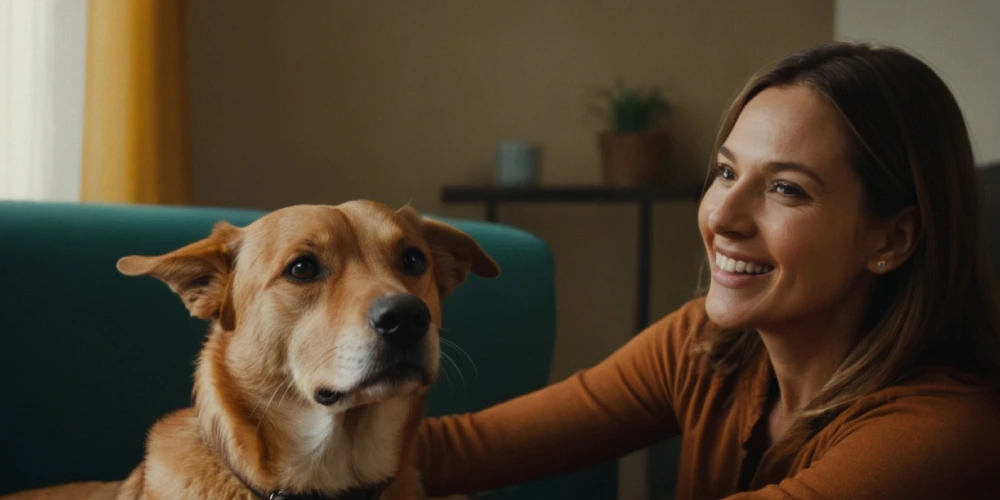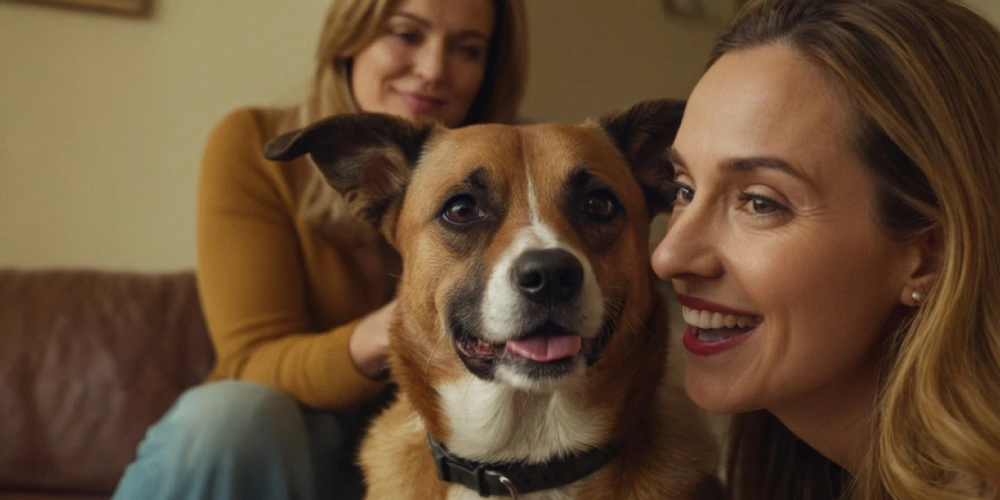
Understanding Why Dogs Jump on You From Behind
“Why Does My Dog Jump On Me From Behind?” Many pet owners experience dogs jumping on people. When your dog jumps on you from behind, it can be surprising and confusing. This action may seem playful or odd, but it usually has a reason. Understanding this behavior is key to helping your dog behave better.
Dogs use body language to express their emotions. Jumping is often a way to communicate excitement, get attention, or assert themselves. They might also jump because they are full of energy and don’t know how to release it. By understanding your dog’s needs, you can guide them toward better habits.
Why Dogs Jump on People
Dogs Want Attention
Most of the time, dogs jump to get your attention. They may feel ignored or want to interact with you. Jumping is an easy way for a dog to make you notice them. If they get a reaction, even if it’s negative, they will think it’s working.
If your dog jumps on you when you come home, it might be a sign that it is happy to see you. However, this behavior can be controlled with proper teaching and clear rules.
Dogs Feel Excited
Dogs are energetic creatures. When they are happy or excited, jumping becomes their way of showing it. For example, they might jump on you from behind during playtime because they are overwhelmed with joy.
While this behavior is often harmless, it can be uncomfortable or dangerous, especially for small children or older adults. Therefore, teaching your dog alternative ways to show excitement is essential.
Dogs Show Dominance
In some cases, jumping can be a sign of dominance. Dogs might jump from behind to assert their position in the household. This behavior is more common in dogs who need to be adequately trained or socialized.
To address this, consistent training is essential. Showing your dog that you are the leader will help reduce this behavior.
How Dogs Communicate Through Body Language
Understanding Dog Signals
Dogs use their body to communicate with humans and other animals. Tail wagging, barking, and jumping are all ways they express their feelings. Jumping, especially from behind, might mean your dog is seeking your attention or feeling excited.
Watching your dog’s body language closely can help you understand its needs. For example, if your dog jumps while wagging its tail, it is likely happy. But if it jumps with a stiff posture, it might be asserting dominance.
Learning Your Dog’s Needs
Every dog is different. Some are more excitable, while others are calm. Paying attention to your dog’s behavior will help you know when and why it jumps. Meeting its emotional and physical needs can also prevent unwanted actions.
For example, if your dog jumps because they want to play, giving them more playtime might reduce the behavior.
Preventing Your Dog From Jumping
Training Commands
Training is the best way to stop unwanted jumping. Teach your dog simple commands like “sit” or “stay.” Reward them with treats or praise when they obey.
Consistency is key. If your dog learns it will only get attention when it is calm, it will be less likely to jump. Practicing these commands every day can make a big difference.
Avoid Encouraging Jumping
We sometimes unintentionally make people misbehave. Say you pet your dog when it jumps; the dog will think it’s okay to jump. Instead, turn away or ignore them until they stop. Reward them only when they behave calmly.
It’s important to set boundaries so your dog knows what is acceptable.
Exercise and Playtime
Dogs need regular exercise to release energy. A dog with enough physical activity is less likely to jump out of excitement or frustration.
One daily stroll, a game of fetch, or letting your dog run in a secure area can all help. Keeping your dog physically active also makes it happier and healthier overall.

What to Do When Your Dog Jumps
Stay Calm
If your dog jumps on you, staying calm is essential. Yelling or pushing them away might make them more excited. Instead, stand still and avoid eye contact. Please wait until your dog calms down before giving them attention.
Redirect Their Energy
Provide your dog with an appropriate way to express its energy. For instance, give it a toy to chew on or play a game that keeps it busy. Redirecting their energy helps them learn what they can do instead of jumping.
Reward Good Behavior
When your dog stays calm or follows a command, reward them immediately. This teaches them that good behavior gets them what they want.
The Importance of Socialization
Meeting Other Dogs
Dogs learn how to behave around other people by being socialized. Dogs who spend time with well-behaved animals are less likely to develop bad habits like jumping.
Taking your dog to a park or setting up playdates with other dogs can be beneficial. They will learn appropriate ways to interact and burn off energy simultaneously.
Exposing Dogs to Different Situations
Introducing your dog to various environments, people, and situations helps reduce anxiety and overexcitement. A trained dog will stay calm and not jump on people as often.
Why Puppies Often Jump More
Puppies Are Learning
Puppies are naturally more playful and curious. Jumping is their way of exploring and interacting with the world. They may also jump to reach your face because they want to greet you.
Training puppies early can help reduce this behavior as they grow. Positive reinforcement and patience are essential when dealing with young dogs.
Puppies Have Extra Energy
Puppies are full of energy and need outlets to burn it off. Giving them lots of toys and time to play can stop them from jumping.
Common Mistakes Owners Make
Reacting Strongly
Many owners accidentally reinforce jumping by reacting strongly. Yelling or laughing can encourage the dog to keep jumping. The best approach is to stay calm and consistent.
Inconsistent Rules
If some people allow jumping while others don’t, your dog will get confused. Make sure that everyone in the house follows the rules.
Conclusion
Dogs jump on people for many reasons, such as seeking attention, feeling excited, or showing dominance. Understanding why your dog jumps helps you address the behavior effectively. Training, exercise, and consistent boundaries are key to preventing jumping. You can enjoy a calmer, happier relationship with your pet by meeting your dog’s needs and guiding them toward better habits.
FAQs
1.How do I stop my dog from jumping on guests?
Train your dog to greet guests calmly with commands like “sit” or “stay.” Reward calm behaviour and ensure guests do not encourage jumping by petting or reacting strongly.
2.Why does my dog jump on me only at certain times?
Your dog may jump in specific situations, such as when you come home or during playtime because it is excited or wants your attention.
3.Can jumping be a sign of anxiety?
Yes, some dogs jump when they feel anxious or uncertain. Providing a calm environment and proper training can help reduce this behavior.
4.Should I punish my dog for jumping?
Punishing your dog doesn’t work and can hurt your bond. Instead, focus on positive reinforcement to teach better behaviours.
5.Is jumping dangerous for small children?
Yes, jumping can knock over small children or scare them. Training your dog to remain calm around kids is essential to prevent accidents.
